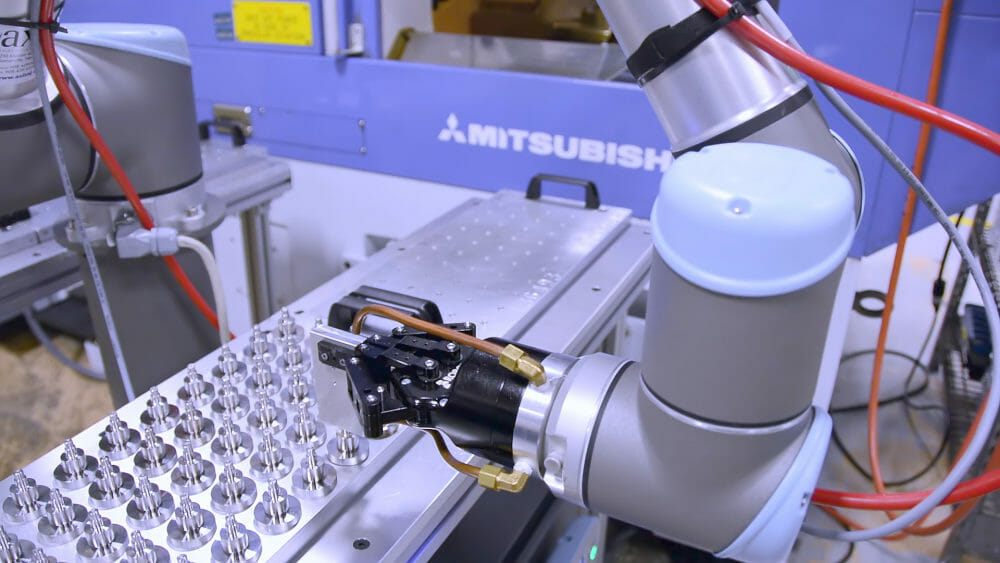In Short
When experiencing increased demand for specialized parts, Whippany Actuation Systems faced an important decision — purchase a new CNC machine, outsource production, or introduce automation with a Universal Robots-based solution. For Whippany, the choice was clear.
Challenge:
Whippany Actuation Systems makes electro-mechanical actuation systems for the aerospace and defense industries. The company needed to increase production quickly, preferred to manufacture in-house, and looked for an alternative solution to sinking a large expenditure into a new CNC machine.
The manufacturer started researching a robot that could tend their CNC machine. Having the robot work unattended overnight would increase production capacity enough to meet the increased demand.
The desired automation also needed to handle parts of different sizes so the ability to integrate with customized adaptive grippers, having both robot and gripper communicate with the CNC machine was imperative.
Solution:
It was then, Whippany’s manager of manufacturing engineering, Phil DeMauro, turned to Universal Robots. “We were looking for a solution that could be implemented and programmed easily and didn’t require the traditional guarding and safety that other robots required,” says DeMauro.
The ability to move the robot from one cell to another was also a “huge consideration”: “We just pop a couple of locating pins in the floor and get up and running”.
The integration of the robot to the CNC was straightforward. Whippany had an outside integrator come in and help wire the discrete I/O to the controller of the gear shaper and the Universal Robot. Once everything was plugged in, they could label all I/O points and map everything out. The system’s control program now allows users to monitor specific I/O tied to events happening on the machine from doors opening and closing to the unit being loaded. Choosing an adaptive Robotiq gripper for these tasks was a “natural choice”, says DeMauro.
Integrating a Robotiq gripper with a Universal Robot is as easy as plugging in a USB and loading the drivers. The gripper itself is “very, very easy to use,” says gear machinist at Whippany, Patrick Cain. “I thought it would be more complicated than it is.”
With Whippany’s CNC machines running two additional, unattended shifts, the company’s goal of increased production capacity has been achieved, says DeMauro, who expects to achieve ROI on the robot in little under one year. Collaborative robotics has not just made Whippany more competitive, the company is now considering the possibility of in-sourcing more work because of its enhanced production capacity.
“Overall it helps the business, from a cost standpoint, from a productivity standpoint, and from a capacity standpoint,” explains DeMauro, who expects company margins to improve as a result of automation.





